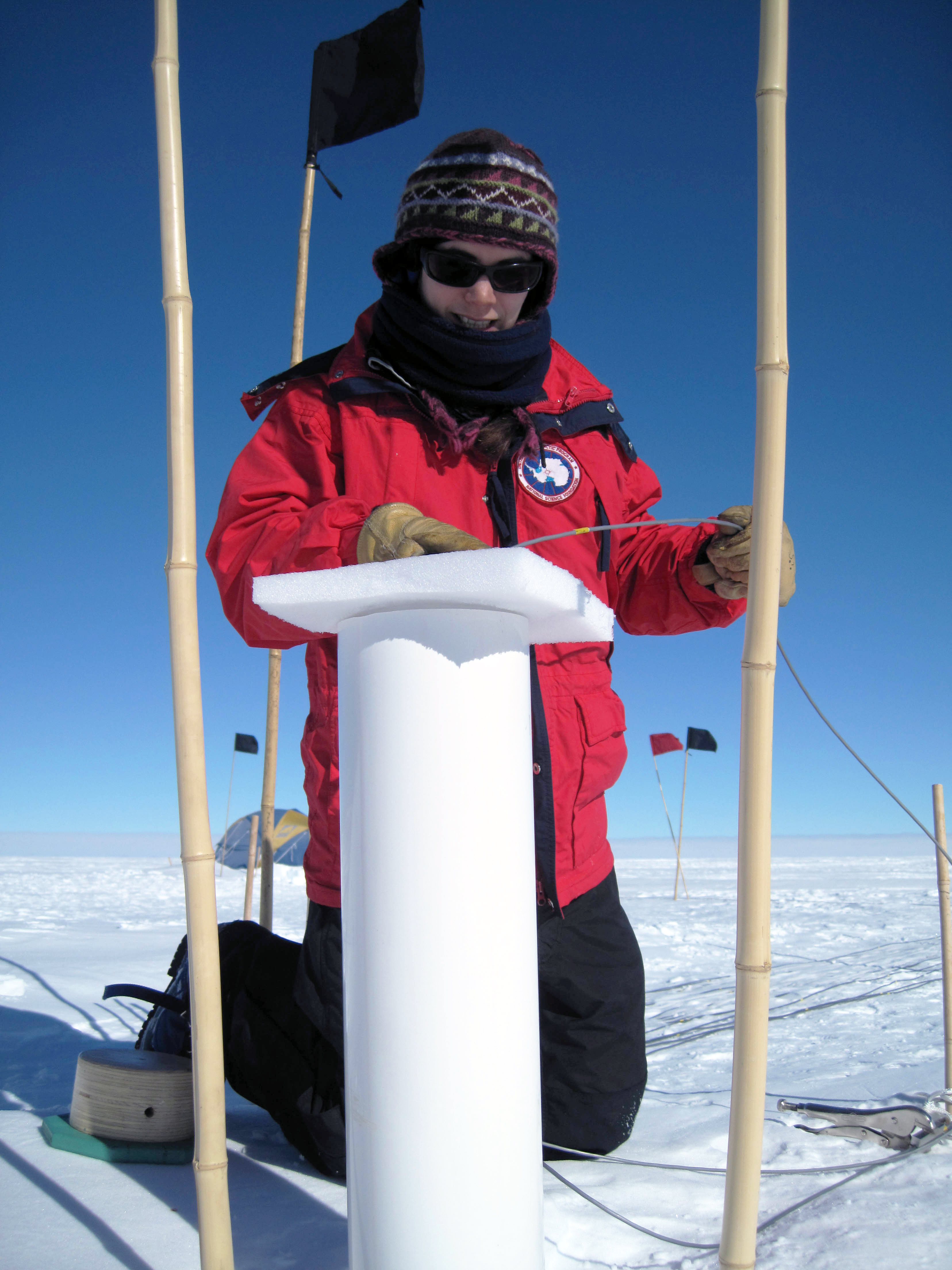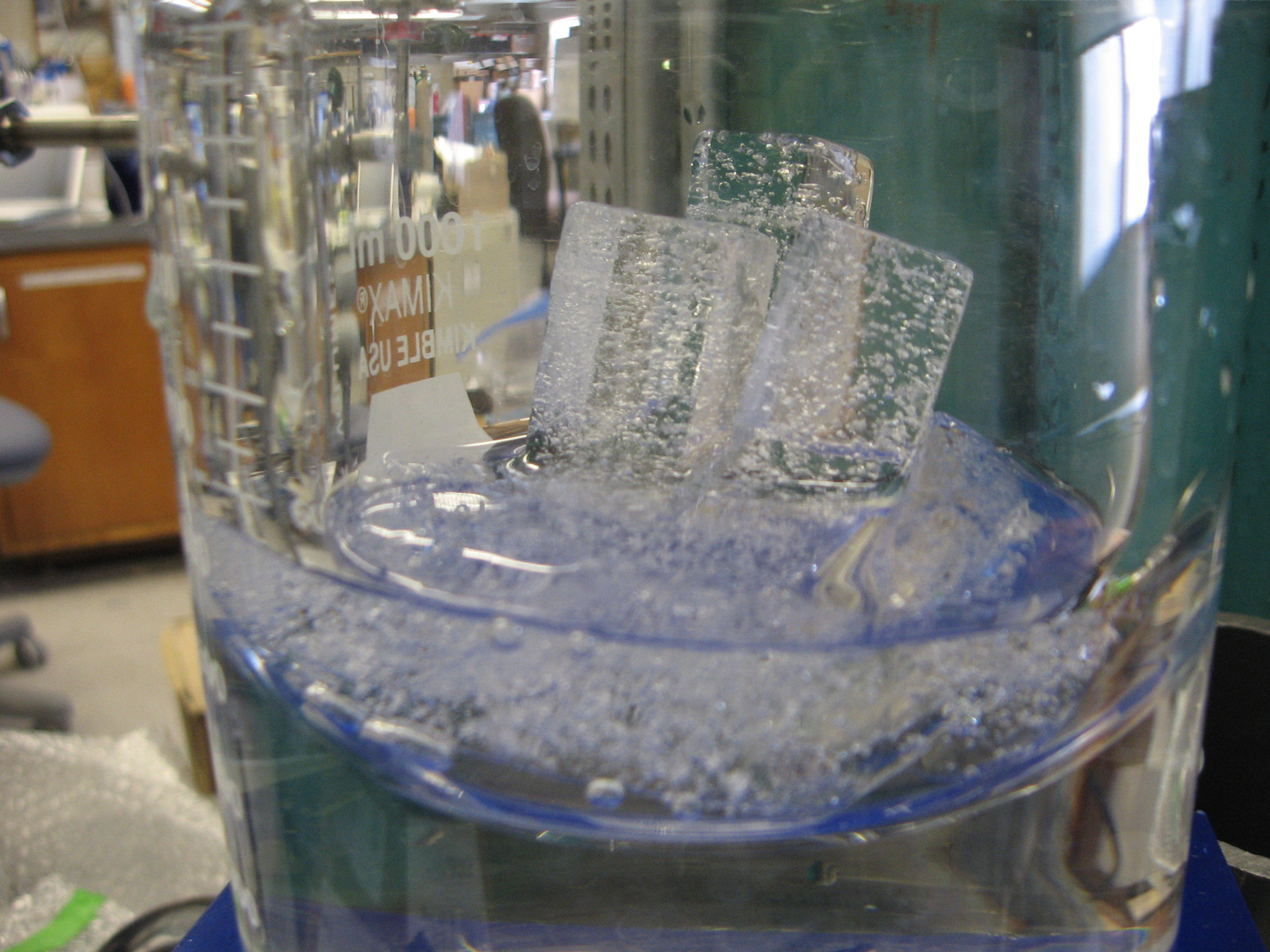
WHEN PEOPLE ASK ME "How was Antarctica?", I inevitably respond, "It was white!" WAIS Divide resembles most deep ice coring field camps: the white ice sheet extends to the horizon like a frozen sea. On a cloudy day, when the light is flat and the horizon indistinguishable, it really feels like being nowhere.
Our camp is actually almost like a small town: we have a post office ("COMMS"), a restaurant (the galley, also called the "oWAISis"), a theater ("REC"), a medic, a mechanic, a carpenter, and even two gas stations - one for the planes, and one for the snowmobiles. We have our suburbs, which we call "Tent City". Most of us choose to live in Tent City, which consists of individual non-heated tents, but we do enjoy the comforts of modern life, like liquid water and heated common areas. WAIS Divide town is a bit like a busy ant colony. Once the camp is fully set-up, drillers and ice core handlers work around the clock to produce as much ice core as possible in our ~2.5 month-long summer field season (~mid-November through January).
This year (see WAIS Divide Season Two A Success), we drilled through the sensitive "brittle ice" with a new technique, allowing us to cut the core down hole, and bring to the surface two and a half meters already cut. As the name implies, brittle ice can fracture on its own, making a popping sound, without any stress applied to it. It is impossible to cut it at the surface: merely touching it with the saw causes it to break into many pieces! To minimize the chances of breaking the cores, we left them in a storage trench at WAIS Divide (which stays below -25 degrees Celsius), where they will have a year to slowly adjust to surface pressure and temperature before they are sent back to the US.
The large-scale fieldwork at WAIS Divide provides an opportunity for students in glaciology to get a taste of Antarctica. Each year, approximately ten students working on the WAIS Divide ice core or other similar projects are chosen as core handlers. As part of my graduate work at Scripps Institution of Oceanography in La Jolla, CA with Dr. Jeff Severinghaus, this is how I became involved with Antarctic research. Like many other students in my field I have a passion for the outdoors, but what really attracted me to climate research is the fact that it is interdisciplinary. The problems I study are a mix of physical oceanography, atmospheric science, glaciology, numerical modeling, basic physics, and chemistry, all of which suit my diverse interests.
I am working on the top portion of the WAIS Divide ice core, which corresponds to the recent past. I am reconstructing the temperature history at WAIS Divide during the "Little Ice Age", a cool period between approximately 1350AD and 1900AD. This was a time when glaciers advanced all over Europe, and the Dutch could ice skate on canals in the winter. Although there is much evidence of the Little Ice Age around the world, the cause of this cold spell is not fully understood. In particular, its manifestation in the Antarctic remains to be explored. Did penguins feel the Little Ice Age? Did they feel it at the same time as Vikings did in Greenland? Or was it delayed? Understanding those things will help us pinpoint potential causes of this climate anomaly. Looking at the timing also helps us understand internal dynamics of the climate system, and this, in turn, enables us to build better climate models and allows us to make more accurate predictions regarding future climate changes.

To reconstruct temperature history I use two complementary methods. The first one, called borehole temperature logging, consists of taking a precise thermometer with a very long cable and lowering it down a hole left over by a previous ice core (the "borehole"). The ice sheet is actually a good insulator, and changes in the temperature of the ice do not get smoothed out very quickly. Long-timescale temperature changes, such as ice age cycles, are clearly recorded in the borehole but rapid seasonal or decadal changes are erased. To measure faster changes, I use the bubbles of ancient air trapped inside the actual ice core. The isotopes of nitrogen and noble gases like argon and krypton inside those bubbles record a temperature signal: the temperature difference between the surface of the snow and the depth at which snow turns into ice and locks in the air bubbles (about 76 meters at WAIS Divide, Antarctica). Abrupt changes in climate will create such a temperature gradient, and affect gas isotopic composition. By combining noble gas isotopic measurements with borehole temperature, I can get an accurate temperature record.
The first part of my work consisted of building the thermometer and calibrating it in the lab. In the field, it takes just a few days to conduct the borehole temperature measurements. The ice analysis, however, is much more time consuming. Once we finish drilling at the end of January, the ice is shipped by vessel back to the United States, and reaches the National Ice Core Laboratory (NICL) in Denver, CO sometime in April. Once the ice reaches NICL, we cut and distribute the samples to all the labs participating in the ice-coring project, and it finally reaches my own lab in the middle of the summer. The proper analysis takes me about a year to complete, but this is only the beginning. Once I get all the data, I need to undo step-by-step what nature has done and go back in time with an inverse model. Finally, after all this, I get my surface temperature record of WAIS Divide. Only then can I start answering the science questions I mentioned above and put it all in the context of global climate. Other students, post-docs, and researchers are working at the same time to reconstruct other climate records. A lot of effort goes into dating the core, and my own results depend upon it. Through different studies we learn not only about temperature but also about storminess, how much it snowed in the past, how the concentration of greenhouse gases have changed in the atmosphere, how many fires there were at lower latitudes, and much more. We even learn about volcanic eruptions and all sorts of other things! All of these data sets complement one another, and we get much more out of looking at them in concert than we do looking at one individual record.
It takes a lot of effort to drill an ice core - more than 40 people go down to Antarctica for the ~2.5 month-long field season, and 20 laboratories work year round analyzing the ice core - but in the end it is the only way to understand how certain parts of the climate system interact and to provide accurate benchmarks to climate models so that we can more accurately predict the consequences of climate change in the future. This is what the WAIS Divide expedition is all about: obtain the best possible data to better understand how the Earth's climate works.

